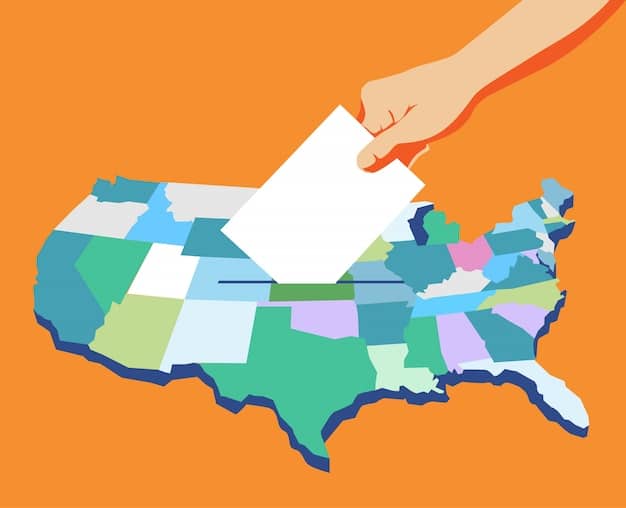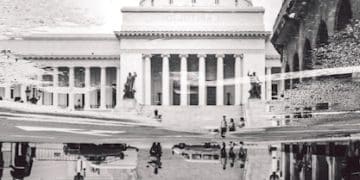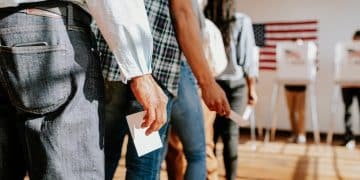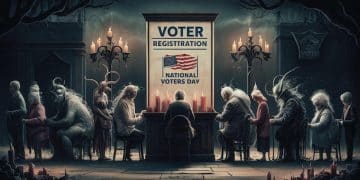The Future of Voting Rights: Supreme Court Rulings Impact

The Future of Voting Rights: Analyzing the Supreme Court’s Recent Rulings examines the evolving legal landscape shaped by the Supreme Court, focusing on landmark decisions affecting voter access, representation, and the integrity of elections in the United States.
The right to vote is a cornerstone of American democracy, but its future is constantly being shaped by legal battles and interpretations of the Constitution. The Future of Voting Rights: Analyzing the Supreme Court’s Recent Rulings is crucial to understanding the evolving landscape.
Understanding the Supreme Court’s Role in Voting Rights
The Supreme Court plays a pivotal role in interpreting laws related to voting rights. Its decisions can either expand or restrict access to the ballot box, impacting the very foundation of democracy. Understanding this role is essential for anyone concerned about election integrity and voter representation.
Historical Context of Supreme Court Voting Rights Cases
The Supreme Court’s involvement in voting rights dates back to the Reconstruction era, with cases that shaped the interpretation of the 15th Amendment. Key decisions have addressed issues like gerrymandering, voter ID laws, and the Voting Rights Act.
The Court’s Current Ideological Composition and its Impact
The current composition of the Supreme Court, with its conservative majority, has raised concerns among voting rights advocates. Recent rulings reflect a more restrictive view of federal oversight and a greater deference to state control over elections.
- Examining the Impact of Shelby County v. Holder (2013)
- Analyzing the Court’s Approach to Voter ID Laws
- Investigating Cases Related to Gerrymandering and Redistricting
The historical context provides a framework for understanding the present challenges. The Court’s ideological leanings inevitably influence its decisions, making it crucial to analyze each ruling within this context.

Key Supreme Court Decisions Shaping the Future of Voting
Several recent Supreme Court decisions have significantly altered the landscape of voting rights. These rulings address various aspects of election law, from redistricting to campaign finance, each with potentially far-reaching consequences for future elections.
Brnovich v. Democratic National Committee (2021)
This case involved challenges to Arizona voting rules that restricted ballot collection and rejected ballots cast in the wrong precinct. The Supreme Court upheld the regulations, setting a precedent for stricter voting rules at the state level.
Alabama Redistricting Case (2022)
In this case, the Supreme Court addressed Alabama’s congressional map, which was challenged for diluting the voting power of Black voters. The Court’s decision has implications for how states draw electoral districts and ensure fair representation.
- Analyzing the Impact on Minority Voters
- Discussing the Legal Arguments and Dissenting Opinions
- Examining the Potential for Future Challenges
These landmark cases demonstrate the Supreme Court’s significant influence on voting rights. Each decision sets precedents that can shape future laws and affect voter access across the country.
Understanding the Impact of Shelby County v. Holder
The 2013 Supreme Court decision in Shelby County v. Holder significantly weakened the Voting Rights Act of 1965. By striking down Section 5, the Court eliminated the requirement for certain states with a history of discrimination to obtain federal preclearance before changing their voting laws.
The Rationale Behind the Shelby County Decision
The Court argued that the preclearance formula was outdated and that significant progress had been made in eliminating racial discrimination in voting. This decision was based on the belief that states could be trusted to administer fair elections without federal oversight.

Consequences and Subsequent Voting Restrictions
Following the Shelby County decision, many states implemented new voting restrictions, such as strict voter ID laws, reduced early voting periods, and the closure of polling places. These measures have been criticized for disproportionately impacting minority voters and undermining voter access.
- Analyzing the Rise of Voter ID Laws
- Examining the Closure of Polling Places in Minority Communities
- Investigating the Reduction of Early Voting Opportunities
The Shelby County v. Holder decision has fundamentally altered the landscape of voting rights in the United States. Its impact continues to be felt as states implement new voting laws and restrictions, raising concerns about voter disenfranchisement.
The Role of Gerrymandering in Diluting Voting Power
Gerrymandering, the practice of drawing electoral district boundaries to favor one political party over another, has long been a controversial issue in American politics. The Supreme Court has grappled with cases related to gerrymandering, but has struggled to find a consistent legal standard for addressing partisan gerrymandering.
Defining Partisan and Racial Gerrymandering
Partisan gerrymandering involves drawing district lines to benefit one political party, while racial gerrymandering aims to dilute the voting power of minority groups. Both practices can undermine fair representation and distort the outcome of elections.
Supreme Court Cases on Gerrymandering
The Supreme Court has heard numerous cases related to gerrymandering, including Vieth v. Jubelirer (2004) and Gill v. Whitford (2018). While the Court has acknowledged the problem of gerrymandering, it has yet to establish a clear and enforceable standard for judicial review.
- Analyzing the Court’s Jurisprudence on Gerrymandering
- Discussing the Challenges of Proving Partisan Intent
- Exploring Potential Remedies, such as Independent Redistricting Commissions
Campaign Finance Regulations and Voting Rights
Campaign finance regulations play a significant role in shaping the political process and can impact voting rights in various ways. Supreme Court decisions on campaign finance have often sparked debate about the balance between free speech and the need to prevent corruption and undue influence in elections.
Buckley v. Valeo (1976) and its Impact
The Supreme Court’s decision in Buckley v. Valeo established the framework for campaign finance regulation, distinguishing between limits on contributions and limits on expenditures. The Court held that limits on contributions were constitutional to prevent corruption, but limits on expenditures violated free speech rights.
Citizens United v. Federal Election Commission (2010)
The Citizens United decision further transformed campaign finance law by allowing corporations and unions to spend unlimited amounts of money on independent political expenditures. This ruling has been criticized for increasing the influence of wealthy donors and corporations in elections.
- Analyzing the Arguments for and Against Campaign Finance Regulations
- Discussing the Role of Money in Politics
- Examining the Potential for Corruption and Undue Influence
Looking Ahead: The Future of Voting Rights in America
The future of voting rights in America is uncertain, but several trends and challenges are likely to shape the legal and political landscape. These include ongoing litigation over voting restrictions, efforts to reform campaign finance laws, and the potential for congressional action to strengthen voting rights protections.
Potential Legislative Reforms
Congress has the power to enact legislation to protect and expand voting rights. The John Lewis Voting Rights Advancement Act, for example, aims to restore key provisions of the Voting Rights Act that were struck down by the Supreme Court in Shelby County v. Holder.
The Role of Grassroots Activism and Advocacy
Grassroots activism and advocacy play a crucial role in defending voting rights. Organizations like the ACLU, the NAACP, and the League of Women Voters are working to educate voters, challenge discriminatory laws, and promote fair elections.
- Analyzing the Challenges of Protecting Voting Rights in a Polarized Political Climate
- Discussing the Importance of Civic Education and Voter Engagement
- Examining the Potential for Technological Innovations to Improve Voter Access
| Key Point | Brief Description |
|---|---|
| ⚖️ Supreme Court Role | Interprets voting laws, impacting access and integrity. |
| 🗳️ Shelby County v. Holder | Weakened Voting Rights Act, led to new restrictions. |
| 🗺️ Gerrymandering | Districts drawn to favor a party, diluting voter power. |
| 💸 Campaign Finance | Regulations impact influence; debates on free speech. |
FAQ
▼
This 2013 Supreme Court decision removed the requirement for certain states to get federal approval before changing voting laws, leading to new restrictions in those states.
▼
Gerrymandering involves drawing district lines to favor one party, which can dilute the voting power of opposing party voters and impact fair representation.
▼
These regulations attempt to balance free speech with preventing corruption, influencing how money impacts elections and potentially affecting voter turnout.
▼
Legislative actions, like the John Lewis Voting Rights Advancement Act, aim to restore protections weakened by Supreme Court decisions, strengthening voter access.
▼
Grassroots efforts educate voters, challenge restrictive laws, and promote fair elections, playing a critical role in advocating for and defending voting rights.
Conclusion
The Supreme Court’s decisions significantly shape the future of voting rights in the US, influencing access, representation, and election integrity. Monitoring these developments and engaging in informed advocacy is vital to safeguarding democratic principles.





